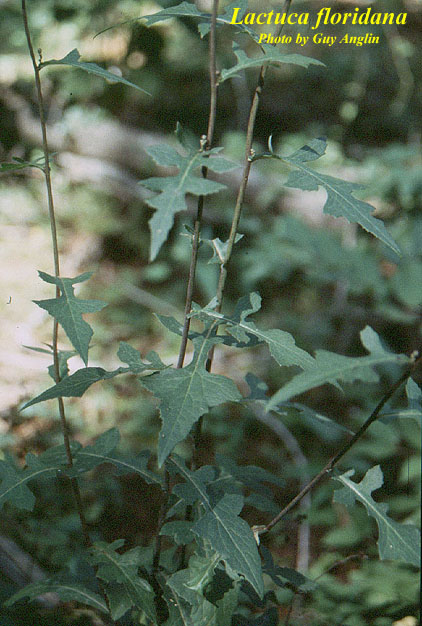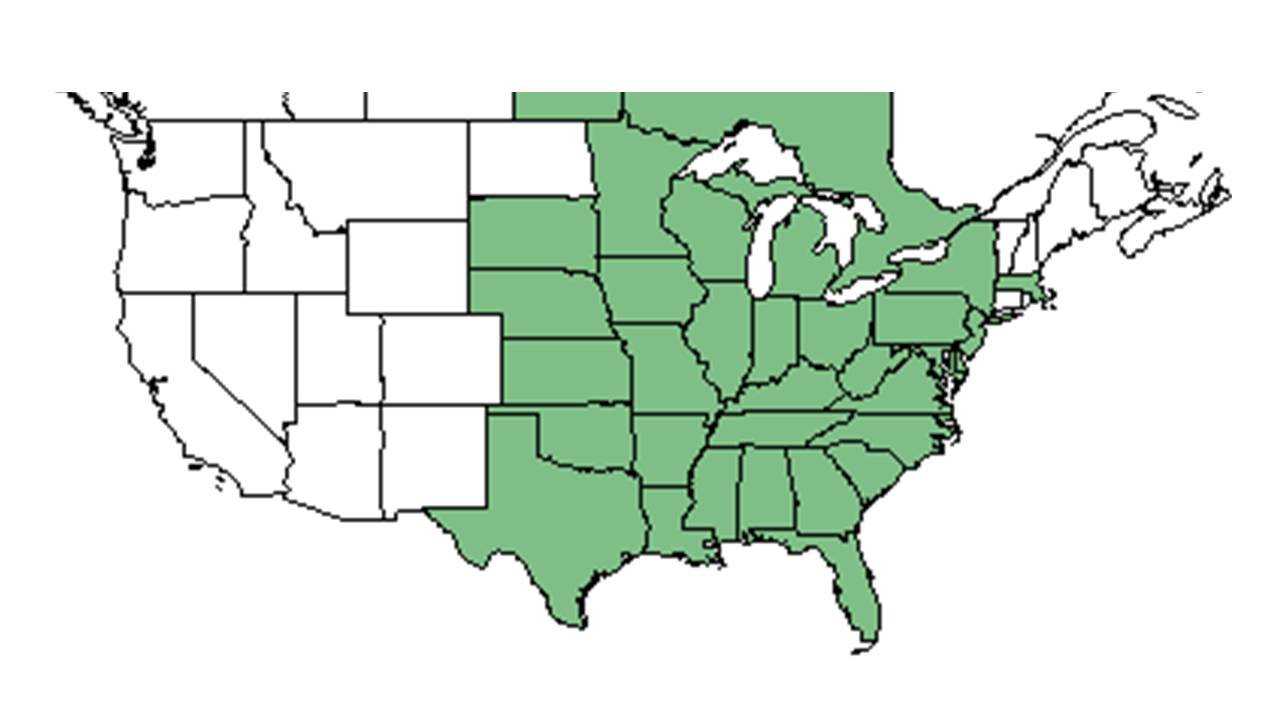Difference between revisions of "Lactuca floridana"
HaleighJoM (talk | contribs) (→Herbivory and toxicology=) |
|||
| Line 18: | Line 18: | ||
}} | }} | ||
| − | Common name: | + | Common name: woodland lettuce<ref name=weakley>Weakley, A.S. 2020. Flora of the Southeastern United States. Edition of 20 October 2020. University of North Carolina at Chapel Hill, Chapel Hill, North Carolina.</ref> |
==Taxonomic notes== | ==Taxonomic notes== | ||
Synonyms: ''Mulgedium floridanum'' (Linnaeus) A.P. de Candolle; ''Mulgedium villosum'' (Jacquin) Small.<ref name="weakley">Weakley, A.S. 2015. Flora of the southern and mid-atlantic states. Working Draft of 21 May 2015. University of North Carolina at Chapel Hill, Chapel Hill, North Carolina.</ref> | Synonyms: ''Mulgedium floridanum'' (Linnaeus) A.P. de Candolle; ''Mulgedium villosum'' (Jacquin) Small.<ref name="weakley">Weakley, A.S. 2015. Flora of the southern and mid-atlantic states. Working Draft of 21 May 2015. University of North Carolina at Chapel Hill, Chapel Hill, North Carolina.</ref> | ||
Revision as of 14:54, 2 June 2023
| Lactuca floridana | |
|---|---|

| |
| Photo by Guy Anglin, Atlas of Florida Vascular Plants | |
| Scientific classification | |
| Kingdom: | Plantae |
| Division: | Magnoliophyta - Flowering plants |
| Class: | Magnoliopsida – Dicotyledons |
| Order: | Asterales |
| Family: | Asteraceae ⁄ Compositae |
| Genus: | Lactuca |
| Species: | L. floridana |
| Binomial name | |
| Lactuca floridana (L.) Gaertn. | |

| |
| Natural range of Lactuca floridana from USDA NRCS Plants Database. | |
Common name: woodland lettuce[1]
Contents
[hide]Taxonomic notes
Synonyms: Mulgedium floridanum (Linnaeus) A.P. de Candolle; Mulgedium villosum (Jacquin) Small.[1]
Varieties: none.[1]
Description
A description of Lactuca floridana is provided in The Flora of North America.
Distribution
This plant occurs north in New York, Manitoba, and Minnesota, and south to Florida and Texas.[1]
Ecology
Habitat
This species can be found in mesic coastal calcareous hammocks, mesic woodlands, moist edges of ponds, upland hardwood forest remnants, and bordering small streams.[2] It also does well in disturbed areas near boat landings, on camping areas, along railroad banks, weedy areas, pastured fields, and clearings of swamps and woodlands.[2] It grows can grow in fully shaded to partial shade environments in loamy and oyster shell soils.[2] Associated species include longleaf pine, oak, hickory, beech, magnolia, and sweetgum.[2]
Lactuca floridana is an indicator species for the North Florida Longleaf Woodlands community type as described in Carr et al. (2010).[3]
Phenology
L. floridana has been observed flowering in April to June, and August through October and fruiting in October and December.[2][4]
Herbivory and toxicology
Lactuca floridana has been observed to host the aphid Aphis sp. (family Aphididae).[5]
Conservation, cultivation, and restoration
Cultural use
Similar to cultivated lettuce, wild lettuce species can be used as salad greens.[6]
Photo Gallery
References and notes
- ↑ Jump up to: 1.0 1.1 1.2 1.3 Weakley, A.S. 2020. Flora of the Southeastern United States. Edition of 20 October 2020. University of North Carolina at Chapel Hill, Chapel Hill, North Carolina. Cite error: Invalid
<ref>tag; name "weakley" defined multiple times with different content Cite error: Invalid<ref>tag; name "weakley" defined multiple times with different content Cite error: Invalid<ref>tag; name "weakley" defined multiple times with different content - ↑ Jump up to: 2.0 2.1 2.2 2.3 2.4 Florida State University Robert K. Godfrey Herbarium database. URL: http://herbarium.bio.fsu.edu. Last accessed: June 2014. Collectors: Loran C. Anderson, A. H. Curtiss, A. Gholson Jr., Robert K. Godfrey, C. Jackson, R. Kral, T. MacClendon, K. MacClendon, Richard S. Mitchell, Harry Neel, Gil Nelson, J. B. Nelson, George R. Cooley, Carroll E. Wood, Jr., and Kenneth A. Wilson. States and Counties: Florida: Calhoun, Dixie, Duval, Escambia, Franklin, Gadsden, Hernando, Jackson, Jefferson, Leon, Liberty, Masidon, Taylor, and Wakulla.
- Jump up ↑ Carr, S.C., K.M. Robertson, and R.K. Peet. 2010. A vegetation classification of fire-dependent pinelands of Florida. Castanea 75:153-189.
- Jump up ↑ Nelson, G. PanFlora: Plant data for the eastern United States with emphasis on the Southeastern Coastal Plains, Florida, and the Florida Panhandle. www.gilnelson.com/PanFlora/ Accessed: 12 DEC 2016
- Jump up ↑ Discoverlife.org [1]
- Jump up ↑ Fernald, et al. 1958. Edible Plants of Eastern North America. Harper and Row Publishers, New York.